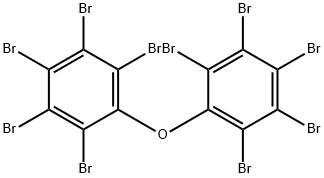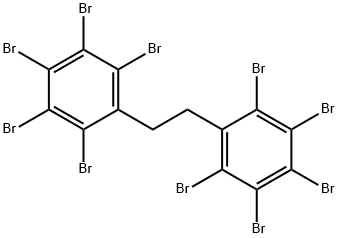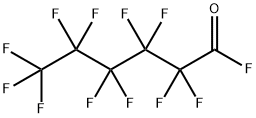Decabromodiphenyl oxide
Synonym(s):Decabromodiphenyl ether solution;Decabromodiphenyl oxide
- CAS NO.:1163-19-5
- Empirical Formula: C12Br10O
- Molecular Weight: 959.17
- MDL number: MFCD00000059
- EINECS: 214-604-9
- SAFETY DATA SHEET (SDS)
- Update Date: 2025-12-10 16:23:50

What is Decabromodiphenyl oxide?
Description
DBDPO is a white to off-white powder.Molecular weight = 959.9. Hazard Identification (based onNFPA-704 M Rating System): Health 2, Flammability 0,Reactivity 0. Slightly soluble in water.
Chemical properties
Decabromodiphenyl Oxide (DBDPO) is a white to off-white or light yellow powder. Almost insoluble in all solvents. Good thermal stability. Heated to 354 ℃, weight loss 5%. It is a non-toxic and non-polluting flame retardant.
The Uses of Decabromodiphenyl oxide
Decabromodiphenyl ether is a brominated flame retardant that is used in conjunction with antimony trioxide in high impact polystyrene. DecaBDE is used as an additive flame retardant, and has a variety of applications including in plastics/polymers/composites, textiles, adhesives, sealants, coatings and inks. DecaBDE containing plastics are used in housings of computers and TVs, wires and cables, pipes and carpets. Adverse effects are reported for soil organisms, birds, fish, frog, rat, mice and humans. One of the new POPs under the Stockholm Convention
Definition
ChEBI: Decabromodiphenyl ether is a polybromodiphenyl ether that is diphenyl ether in which all of the hydrogens have been replaced by bromines. It has a role as a neurotoxin.
What are the applications of Application
Decabromodiphenyl oxide is an unreactive, additive flame retardant widely used for its thermal stability and its low cost in thermoplastic resins, thermoset resins, textiles and adhesives. The major applications are in high impact polystyrene, glass reinforced thermoplastic polyester and moulding resins, low density polyethylene extrusion coatings, polypropylene (homo- and copolymers), acrylonitrile butadiene styrene rubber, nylon and polyvinyl chloride.
Preparation
Decabromodiphenyl ether can be synthesized by reacting diphenyl ether with bromine in the presence of halogenated catalyst (iron powder, etc.).
The diphenyl ether is dissolved in the solvent, the catalyst is added, and then bromine is added to carry out the reaction. After the reaction, filter, wash and dry to obtain decabromodiphenyl ether. Commonly used solvents are dibromoethane, dichloroethane, dibromomethane, carbon tetrachloride, tetrachloroethane and the like.
General Description
White to off-white powder with a chemical odor.
Air & Water Reactions
Insoluble in water.
Reactivity Profile
Decabromodiphenyl oxide is incompatible with strong oxidizers .
Fire Hazard
Flash point data for Decabromodiphenyl oxide are not available; however, Decabromodiphenyl oxide is probably combustible.
Safety Profile
Questionable carcinogen with experimental neoplastigenic data. Experimental reproductive effects. Used as a flame retardant for thermoplastics. When heated to decomposition it emits toxic fumes of Br-. See also ETHERS and BROMIDES
Potential Exposure
It is used as a fire retardant for thermoplastics and man-made fibers.
First aid
If this chemical gets into the eyes, remove anycontact lenses at once and irrigate immediately for at least15 min, occasionally lifting upper and lower lids. Seek medical attention immediately. If this chemical contacts theskin, remove contaminated clothing and wash immediatelywith soap and water. Seek medical attention immediately. Ifthis chemical has been inhaled, remove from exposure,begin rescue breathing (using universal precautions, including resuscitation mask) if breathing has stopped and CPR ifheart action has stopped. Transfer promptly to a medicalfacility. When this chemical has been swallowed, get medical attention. Give large quantities of water and inducevomiting. Do not make an unconscious person vomit.
Storage
Color Code—Green: General storage may be used.Prior to working with DPDPO you should be trained on itsproper handling and storage. Store in tightly closed containers in a cool, well-ventilated area away from strong oxidizers.Where possible, automatically transfer this chemical fromdrums or other storage containers to process containers. Useonly nonsparking tools and equipment, especially when opening and closing containers of this chemical. Sources of ignition, such as smoking and open flames, are prohibited wherethis chemical is used, handled, or stored in a manner thatcould create a potential fire or explosion hazard. Whereverthis chemical is used, handled, manufactured, or stored, useexplosion-proof electrical equipment and fittings.
Shipping
UN3077 Environmentally hazardous substances, solid, n.o.s., Hazard class: 9; Labels: 9-Miscellaneous hazardous material, Technical Name Required. UN3152 Polyhalogenated biphenyls, solid or Polyhalogenated ter- phenyls, solid, Hazard class: 9; Labels: 9-Miscellaneous hazardous material.
Incompatibilities
Incompatible with strong oxidizers (chlo- rates, nitrates, peroxides, permanganates, perchlorates, chlorine, bromine, fluorine, etc.); contact may cause fires or explosions. Keep away from alkaline materials, strong bases, strong acids, oxoacids, and epoxides. Ethers have a tendency to form unstable and explosive peroxides.
Properties of Decabromodiphenyl oxide
| Melting point: | >300 °C(lit.) |
| Boiling point: | 425°C |
| Density | 3 g/cm3 |
| vapor pressure | 0Pa at 21℃ |
| refractive index | 1.5000 (estimate) |
| Flash point: | -12 °C |
| storage temp. | 2-8°C |
| solubility | <0.0001mg/l |
| form | Solid |
| color | White to Light Brown |
| Water Solubility | <0.1 g/100 mL at 20 ºC |
| BRN | 2188438 |
| Stability: | Stable. Incompatible with strong oxidizing agents. |
| CAS DataBase Reference | 1163-19-5(CAS DataBase Reference) |
| IARC | 3 (Vol. 48, 71) 1999 |
| EPA Substance Registry System | Decabromodiphenyl oxide (1163-19-5) |
Safety information for Decabromodiphenyl oxide
| Signal word | Danger |
| Pictogram(s) |
 Flame Flammables GHS02  Corrosion Corrosives GHS05  Exclamation Mark Irritant GHS07  Health Hazard GHS08  Environment GHS09 |
| GHS Hazard Statements |
H225:Flammable liquids H302:Acute toxicity,oral H304:Aspiration hazard H312:Acute toxicity,dermal H315:Skin corrosion/irritation H318:Serious eye damage/eye irritation H320:Serious eye damage/eye irritation H336:Specific target organ toxicity,single exposure; Narcotic effects H341:Germ cell mutagenicity H351:Carcinogenicity H373:Specific target organ toxicity, repeated exposure H410:Hazardous to the aquatic environment, long-term hazard H413:Hazardous to the aquatic environment, long-term hazard |
| Precautionary Statement Codes |
P201:Obtain special instructions before use. P202:Do not handle until all safety precautions have been read and understood. P210:Keep away from heat/sparks/open flames/hot surfaces. — No smoking. P260:Do not breathe dust/fume/gas/mist/vapours/spray. P264:Wash hands thoroughly after handling. P264:Wash skin thouroughly after handling. P273:Avoid release to the environment. P280:Wear protective gloves/protective clothing/eye protection/face protection. P331:Do NOT induce vomiting. P301+P310:IF SWALLOWED: Immediately call a POISON CENTER or doctor/physician. P305+P351+P338:IF IN EYES: Rinse cautiously with water for several minutes. Remove contact lenses, if present and easy to do. Continuerinsing. P308+P313:IF exposed or concerned: Get medical advice/attention. P370+P378:In case of fire: Use … for extinction. P405:Store locked up. P501:Dispose of contents/container to..… |
Computed Descriptors for Decabromodiphenyl oxide
| InChIKey | WHHGLZMJPXIBIX-UHFFFAOYSA-N |
Decabromodiphenyl oxide manufacturer
New Products
4,4-Difluoropiperidine hydrochloride tert-butyl 9-methoxy-3-azaspiro[5.5]undecane-3-carboxylate Indole Methyl Resin N-Isopropylurea N,N-Dicyclohexylcarbodiimide(DCC) MELDRUMS ACID 5-METHYLISOXAZOLE-4-CARBOXYLIC ACID Magnessium Bis glycinate Zinc ascorbate 1-bromo-2-butyne 2-acetamidophenol 9(10H)-anthracenone Erythrosin B, 4-Piperidinopiperidine 2-((4-morpholinophenylamino) (methylthio) methylene) malononitrile 2,4-dihydroxybenzaldehyde 3-(4-morpholinophenylamino)-5-amino-1H-pyrazole-4-carbonitrile Methyl 2-methylquinoline-6-carboxylate 2,6-dichloro-4-nitropyridine 4-Bromo-2-chlorobenzonitrile 2-(benzylamino)acetic acid hydrochloride 4-(tert-Butoxycarbonylamino)but- 2-ynoic acid 3,4-dihydro-2H-benzo[b][1,4]dioxepine 1-Phenyl-1-cycloprppanecarboxylicacidRelated products of tetrahydrofuran








You may like
-
 Decabromodiphenyl ether, 98% CAS 1163-19-5View Details
Decabromodiphenyl ether, 98% CAS 1163-19-5View Details
1163-19-5 -
 BDE 209 in 2,2,4-Trimethylpentane CAS 1163-19-5View Details
BDE 209 in 2,2,4-Trimethylpentane CAS 1163-19-5View Details
1163-19-5 -
 White Decabromodiphenyl Ether 83% CAS 1163-19-5View Details
White Decabromodiphenyl Ether 83% CAS 1163-19-5View Details
1163-19-5 -
 Deca Bromo Diphenyl Oxide (DBDPO), For IndustrialView Details
Deca Bromo Diphenyl Oxide (DBDPO), For IndustrialView Details
101-84-8 -
 Decabromo Diphenyloxide Chemical, PowderView Details
Decabromo Diphenyloxide Chemical, PowderView Details
1163-19-5 -
 20677-73-0 (2,2-diethoxyethyl)methylamine 98%View Details
20677-73-0 (2,2-diethoxyethyl)methylamine 98%View Details
20677-73-0 -
 3-(4-(hydroxyamino)-1-oxoisoindolin-2-yl)piperidine-2,6-dione 98%View Details
3-(4-(hydroxyamino)-1-oxoisoindolin-2-yl)piperidine-2,6-dione 98%View Details -
 57381-49-4 2-bromo-4-chlorobenzonitrile 98%View Details
57381-49-4 2-bromo-4-chlorobenzonitrile 98%View Details
57381-49-4
